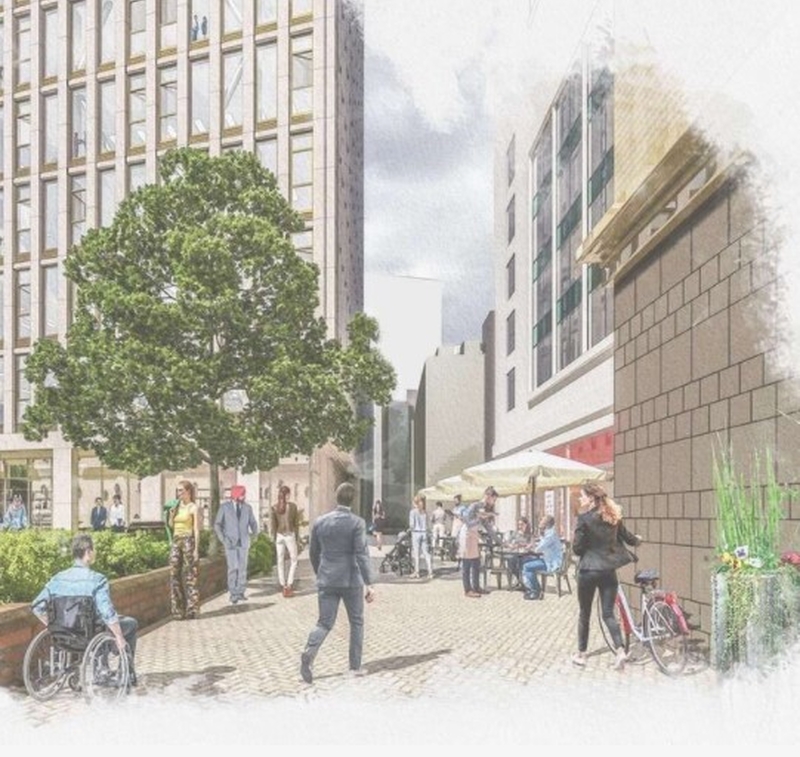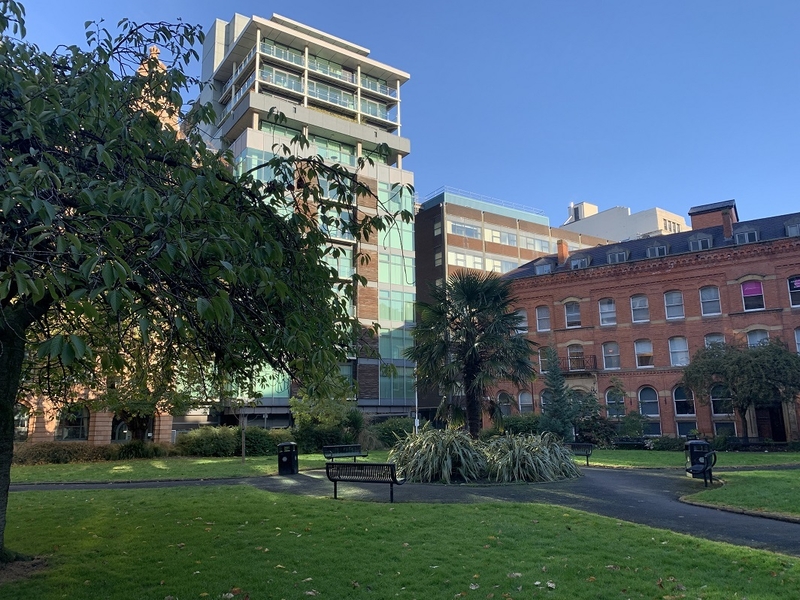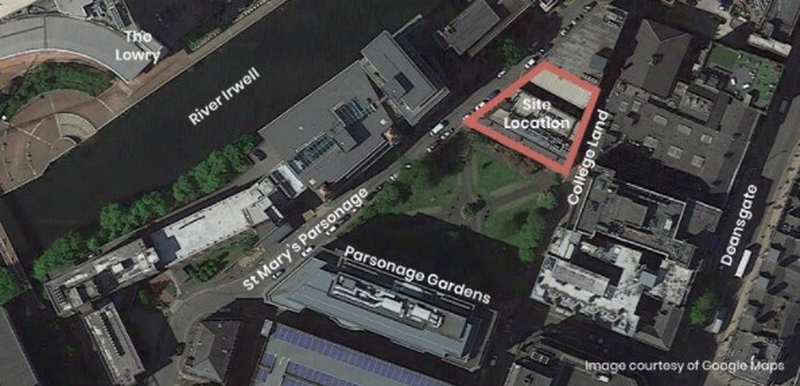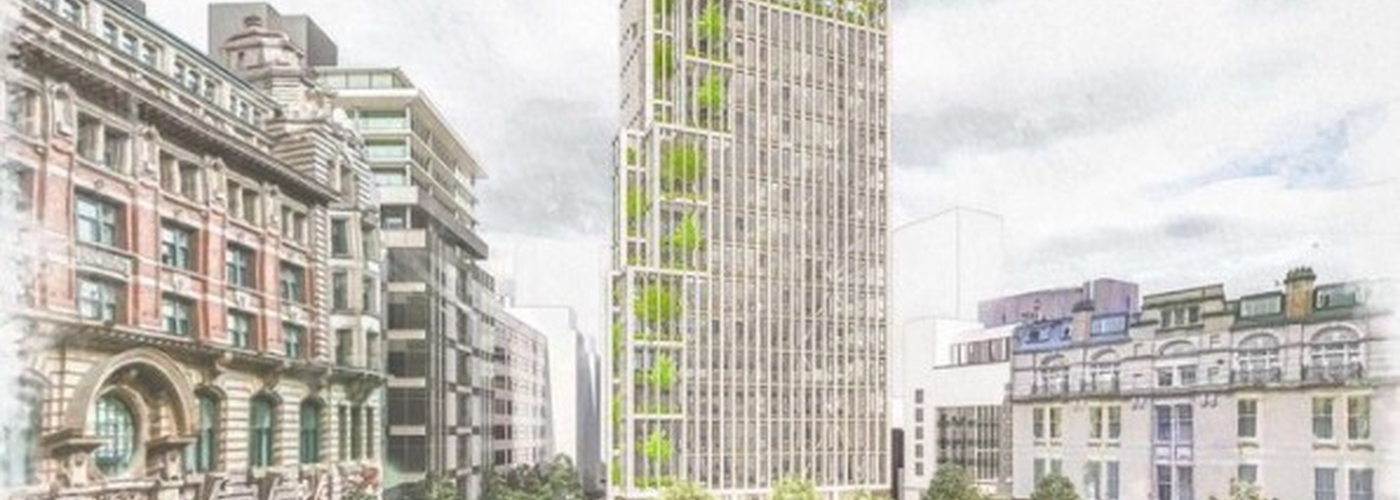Jonathan Schofield on whether the excuse of a building being 'uneconomic' is wearing thin
City centre architecture is not only about the grace or sharpness of a design and the quality of materials but about location too. In the older areas of European cities density is usually good but height, not necessarily so.
There’s building proposal from Beaconsfield Commercial Ltd that will test the question of density and height to the limit.
An accountant somewhere has worked out more money can be made in the long run by building tall and big
The building in question will be offices called One North Parade and sit on the north side of Parsonage Gardens. It looks decent as well. 14/15 storeys, say 150ft (45m), maybe a bit more. There are trees and shrubs popping out of the top floors. Architecture follows fashion and buildings sprouting vegetation is all the rage.
The architects will be SimpsonHaugh, who, if you’ve been reading up on Manchester’s recent tall buildings, will be very familiar. And then some. And then some more. The landscaping will come from Planet-IE which are tugging on SimpsonHaugh’s shirttails for the number of commissions they win in this city. Both these local companies are excellent but wow, they do well.

The idea from Beaconsfield is to deliver a good quality building with some excellent landscaping all around. This would then lead to general improvements in the area particularly in the network of dowdy alleyways between Deansgate and St Mary’s Parsonage. There would be more on-street activity and thus the area would feel livelier and safer.
More to the point the valuable city centre green space of Parsonage Gardens would receive a boost. This City Council-owned plot of land occupying the former churchyard of the long gone St Mary’s church is sporadically ‘maintained’ to a level somewhere deep below minimum. Which party would provide the funds for this boost to the Gardens should One North Parade happen is unclear.

Anyway it all sounds very good, a no-brainer. The proposal document falls over backwards trying to use considerate and persuasive language. This is going to be a ‘thoughtful new office space’ and also a completely new type of building’ (eh?). It will be ‘sustainable’. Very ‘sustainable’ given the repetition of that word.
You can understand the tone because the handsome, limestone-clad tower would crash down on two nineteenth century commercial buildings. This is going to cause a fuss and rightly so.
Building taller buildings on brownfield sites around the city centre is one thing. Demolishing buildings, which however, modest add context and variety to the city scene is another. One North Parade would be grand in say the Northern Gateway area on a cleared site in Collyhurst, but here it looks big and destructive.


Beaconsfield say the handsome 1890s five-storey office block that closes the garden on the north side is now redundant and has reached the end of its useful life. The same goes for the nineteenth century building next along. The problem is that these buildings, and the ones a little to the north again, provide a sweet clump of commercial buildings that speak to the history of Manchester.
The Gardens facing building is a palazzo structure with that oh-so-very-Manchester gentle orange brick with yellow-sandstone dressings exterior. It's restrained and modest and not the worse for those characteristics.
The argument that the old buildings have outlived their usefulness is sophistry. An accountant somewhere has worked out more money can be made in the long run by building tall and big. That may be the case, but for God’s sake, One North Parade is in a conservation area, areas specifically designated to protect the particular street scene in that area. Is there really no way at all of making money and retaining older buildings?

What about making these conservation area structures the smartest offices in the city centre or doing something clever with the arcade of windows at ground floor level facing the Gardens. What about making the whole area a little artists colony. Surely these valuable reminders of what the city was are worth retaining. There is no need to fit a quart into a pint pot on this crammed site.
Retaining older buildings is not a sentimental argument but an argument about variety and identity. A mix of old and new buildings lends a city individuality and makes it a more attractive proposition within which to invest. Architects and planners talk a lot about the ‘grain’ of city, how its streets have fitted together over the decades. This proposal does nothing for the ‘grain’ of this conservation area.
Beaconsfield may point to the tallish building recently proposed for the former Kendals/House of Fraser multi-storey car park but this is away from the Gardens and the car park is a concrete eyesore and needs to go. Beaconsfield may point to the two decades old extension to Century Buildings on the west side of the Gardens, but that was then. Century Buildings created flats in a 1970s' office block, not in a nineteenth century 'palazzo' style office.

The heady redevelopment of the central areas of Manchester and Salford has been exciting to watch. There’s been some really good stuff built and some absolute dross. The One North Parade proposal is thoughtfully put together and sympathetically written. There’s no bombast or pushiness. There seems a real desire to consult.
But, respectfully sometimes that is not enough. The height is too much for the density of building here. It can seem too easy in this city to expunge the past with a sweep of the 'no economic viability' brush.
Instead of losing buildings that add identity maybe Beaconsfield can revise their plans to retain the older buildings and prove that a policy of rip it up and start again need not be the default position with Manchester city centre development.
If you want to read through the proposals and offer comment, here's the link.
















